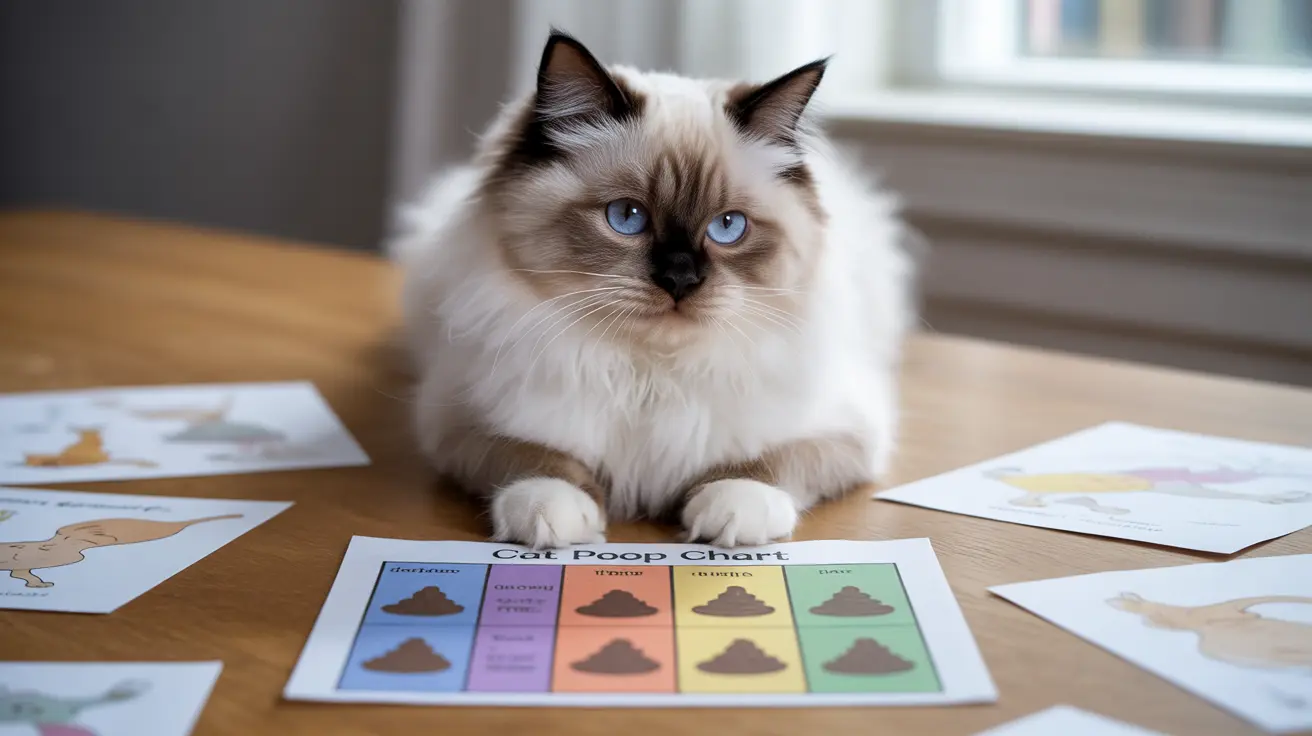Monitoring your cat's health through their litter box habits is a crucial part of responsible pet ownership. A cat poop chart with pictures serves as an invaluable tool for pet parents, helping them identify potential health issues early and determine when veterinary attention is needed.
In this comprehensive guide, we'll explore how to use a cat poop chart effectively, what different stool characteristics mean, and when changes in your cat's bowel movements warrant medical attention.
Understanding Your Cat's Normal Stool
Healthy cat stool should be deep brown in color, well-formed, and relatively firm—similar to a small sausage in shape. When using your cat poop chart with pictures as a reference, look for these key characteristics of normal feces:
- Deep chocolate brown color
- Firm but not hard consistency
- Uniform shape and size
- Minimal odor
- Easy to scoop with little residue
How to Use a Cat Poop Chart Effectively
A visual cat poop chart serves as your first line of defense in monitoring your pet's health. Here's how to make the most of this tool:
Daily Monitoring
- Check your cat's stool daily during litter box cleaning
- Compare what you see to the chart's images
- Note any changes in color, consistency, or frequency
- Keep a simple log of significant changes
What to Look For
- Color variations from normal brown
- Changes in consistency or shape
- Presence of blood, mucus, or foreign material
- Frequency of bowel movements
Common Stool Abnormalities and Their Meanings
Color Variations
Different stool colors can indicate various health issues:
- Black or tarry: Potential upper GI bleeding
- Red streaks: Lower GI bleeding or inflammation
- Green or yellow: Possible liver or gallbladder issues
- White spots: May indicate parasites
- Gray or pale: Could suggest pancreatic problems
Consistency Changes
Texture and consistency variations often signal specific health concerns:
- Very hard pellets: Dehydration or constipation
- Soft, unformed stool: Mild digestive upset
- Watery diarrhea: Infection or serious illness
- String-like or flat: Possible obstruction
Recording and Tracking Changes
Keep these items handy near your litter box:
- A printed cat poop chart with pictures
- A simple tracking calendar
- A phone camera for documentation
- Disposable gloves for closer inspection when needed
Frequently Asked Questions
What do different colors of cat poop mean, and when should I be worried?
Different colors indicate various health issues. Brown is normal, black or tarry stool suggests bleeding, red indicates lower GI issues, and white spots might mean parasites. Any color besides brown that persists for more than a day warrants veterinary attention.
How can I use a cat poop chart with pictures to monitor my cat's health?
Compare your cat's stool to the images on the chart daily during litter box cleaning. Note any changes in color, consistency, or shape, and maintain a simple log to track changes over time.
What are the common causes of abnormal cat poop consistency and texture?
Common causes include dietary changes, dehydration, stress, parasites, infections, and underlying health conditions. Sudden changes in consistency often indicate digestive issues that may need veterinary attention.
When should I contact a veterinarian based on changes in my cat's stool?
Contact your vet if you notice blood in the stool, diarrhea lasting more than 48 hours, constipation, black or tarry stools, or any significant changes accompanied by other symptoms like lethargy or vomiting.
How often should a healthy cat poop, and what does frequency indicate about their health?
Most healthy cats defecate once or twice daily. Less frequent bowel movements might indicate constipation, while increased frequency could suggest digestive issues. Any significant change in frequency should be monitored and discussed with your vet.






